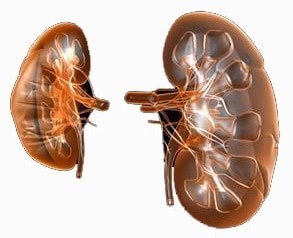Among the severe consequences of infectious diseases that affect the kidneys, glomerulonephritis firmly holds the second position, and among the causes of chronic renal failure is the absolute leader. This disease mainly affects people under 40 years of age, and children often suffer from it.
Signs of glomerulonephritis are usually quite distinct – especially such as morning swelling of the face or the presence of blood in the urine, and an experienced doctor can easily make the correct preliminary diagnosis. But if the patient has an erased form of glomerulonephritis, one should be more aware of the various signs of this disease.
Signs of glomerulonephritis depending on the form of the disease
The essence of glomerulonephritis is the defeat of the renal glomeruli, when the immune complexes begin to be deposited on the capillaries walls, causing them to become inflamed and narrowed. The reason for the activation of immune complexes is usually a streptococcal infection, but some kind of systemic disease, such as systemic lupus erythematosus or, for example, hemorrhagic vasculitis, can also become an impetus. Due to damage to the capillaries in the renal glomeruli, the production of primary urine in the kidneys is disrupted, the exchange of water, salts, and metabolic products in the body worsens, which ultimately leads to renal failure.
Signs of glomerulonephritis appear depending on the stage of the glomerular lesion and the form of the disease. It is customary to distinguish between two forms of glomerulonephritis:
- Acute – manifested by such groups of signs of glomerulonephritis as:
- urinary,
- hypertonic,
- edematous;
- Chronic – characterized by such flow options as:
- high blood pressure against the background of a weak urinary syndrome,
- severe swelling,
- an increased level of red blood cells in the urine.
The course of the chronic form may be latent, with virtually no distinct signs of glomerulonephritis, or mixed, when it is difficult to distinguish the predominant symptom against the background of general malaise.
Signs of glomerulonephritis in the acute form of the disease
Since glomerulonephritis appears as a complication of one of the infectious diseases caused by streptococcal infection, the first symptoms manifest approximately two weeks after the onset of the disease. Characteristic signs of glomerulonephritis in acute form – these are hematuria, oliguria, edema and increased blood pressure.
 Glomerulonephritis usually begins violently, with high fever and chills, the patient complains of nausea, pain in the lumbar region, the skin turns pale, the eyelids swell. In the first few days, diuresis sharply decreases, blood is found in the urine – sometimes up to staining in dark brown or black. A very characteristic sign of glomerulonephritis – puffiness of the face in the morning, which gradually disappears during the day.
Glomerulonephritis usually begins violently, with high fever and chills, the patient complains of nausea, pain in the lumbar region, the skin turns pale, the eyelids swell. In the first few days, diuresis sharply decreases, blood is found in the urine – sometimes up to staining in dark brown or black. A very characteristic sign of glomerulonephritis – puffiness of the face in the morning, which gradually disappears during the day.
In a severe form of acute glomerulonephritis, arterial hypertension develops, cardiovascular activity is disturbed, and the liver enlarges.
Signs of glomerulonephritis in the chronic form of the disease
The chronic form of glomerulonephritis is dangerous with erased symptoms, especially if it does not manifest itself in almost anything other than a mild nephrotic syndrome. The doctor should pay attention to such patient complaints as fluctuations in blood pressure, periodic unexplained edema, urinary disorders and changes in the color of urine.
Both chronic and acute forms of glomerulonephritis are characterized by relapses that occur as a repetition of the acute form and are most often disturbed in the autumn-spring off-season. With timely treatment, the signs of glomerulonephritis stop within a few weeks, and recovery occurs in about 2.5 months.







Add a comment